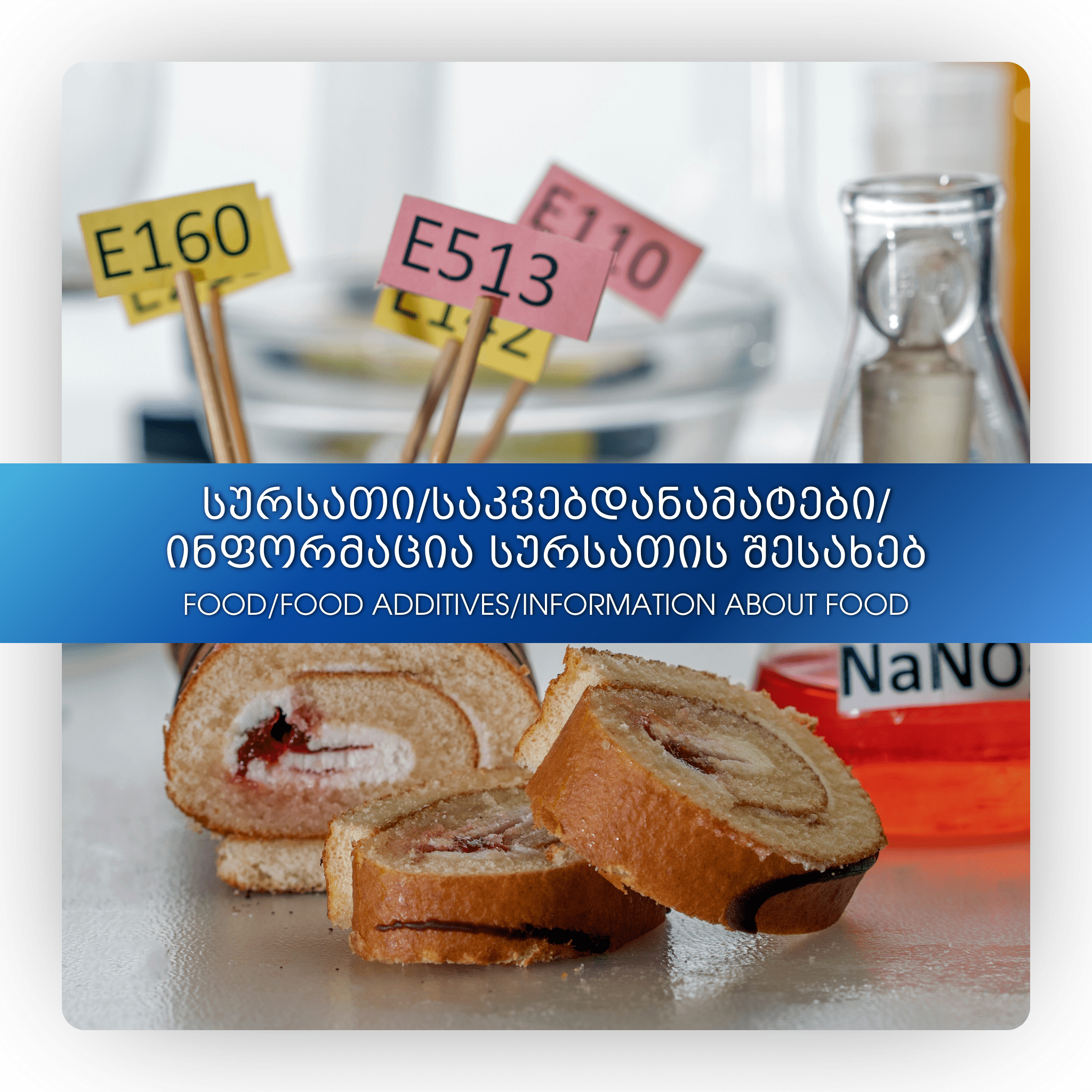Food/Food additives/Information About Food
Each food product has its own characteristics, including taste, aroma, color, consistency, etc. Food additives are added to enhance or impart these properties, making the product more attractive to the consumer.
A food additive is a natural or synthetic substance, the addition of which to human food is regulated by legislation and which is used to improve the technological process of production, to give the product desirable properties, to extend the shelf life and to reduce the time required to prepare a dish.
Food supplements are divided according to 3 signs:
functional purpose, source of intake and chemical structure.
There is a general classification of food additives according to the relevant codes. Each appendix is assigned a three- or four-digit number and an E mark.
◾️ E -100-182: food dyes;
◾️ E-200-299: preservatives (prevents food spoilage);
◾️ E-300-399: antioxidants, acidity regulators, antioxidants (stop the process of fat oxidation);
◾️ E-400-499: stabilizers, thickeners, gelling agents, emulsifiers (giving consistency to the product);
◾️ E-500-599: PH regulators, softeners (prevents formation of costs and deterioration of product texture.);
◾️ E-600-699: flavor and aroma enhancers;
◾️ E-700-799: antibiotics (stop the growth and development of harmful bacteria);
◾️ E-800-899: spare indexes;
◾️ E-900-999: polishing/smoothing agents, glazing additives, gases, defoamers, sweeteners. (improve product quality);
◾️ E-1100-1599: additional additives, new chemicals that do not fit into the standard classification. (amylase, lipase, ethanol, invertase, etc.)
Depending on the source of intake, there are
synthetic, semi-synthetic (obtained by modifying natural substances) and
natural food supplements.
According to the chemical structure, there are
inorganic and
organic compounds.
According to the functional purpose, there are 4 main categories:
◾️ Advanced technological additives - to improve production technology;
◾️ Giver of desired organoleptic properties;
◾️ expiration date extenders;
◾️ Nutritional supplement.
One important category is functional food, which is enriched with various substances and which may have potentially beneficial effects on human health. Here, a nutraceutical is a product separated and purified from food, sold as a drug, and proven to have positive effects on chronic diseases. Functional foods are common foods that we may take as part of our daily diet.
There are 4 main classifications of food:
◾️ Conventional or natural food - obtained in nature and represents the basis of functional food;
◾️ Modified food - enriched food, in which the concentration of nutrients is artificially increased;
◾️ Medical food - food that is issued by prescription and must be prescribed only by a doctor;
◾️ Special diet foods - similar to medical foods, but are commercially available and do not require physician supervision.
When creating functional food, we should remember that the minimum and maximum indications of mineral substances and vitamins in food should be determined according to their absolute content.
In accordance with the legislation of Georgia, it is allowed to add only those minerals and vitamins whose safety has been determined based on risk assessment.
Requirements for food additives:
◾️ Each of them must have a strongly expressed functional property (strong dye, strong specific smell, strong emulsifier, etc.);
◾️ must be non-toxic;
◾️ should be stable and resistant to environmental conditions;
◾️ Their production should be simple;
◾️ Should be available in the market and low cost.
Food information is essential to enable consumers to make informed decisions.
The information to be presented to the consumer about food is determined by the legislation of Georgia. This information must be easy to understand and must not be misleading.
A label is a label, trademark, graphic or other descriptive image placed on a food package or container in written, printed, patterned or embossed form.
In contrast to the label, food information is a broader commandment and is presented to the consumer using both the label and advertising, packaging material, the Internet, information banners, booklets, verbal communication and other means.
Nutritional information includes:
◾️ food name;
◾️ Mandatory accompanying data, which must be provided to the consumer along with the name (description of the physical condition or processing method of the food, eg: ground, smoked, frozen, concentrated, dry, reconstituted, etc.);
◾️ Ingredients;
◾️ net weight of food;
◾️ Marking of the expiration of the minimum shelf life or "use by..." date - the minimum shelf life is the period of time during which, under proper storage conditions, the food retains its characteristic properties, and the food, which is dangerous from a microbiological point of view, should be placed " "Applies to" date;
◾️ special conditions of storage or use;
◾️ Country of origin or place of origin;
◾️ Instructions for use;
◾️ indication of actual alcohol concentration for drinks;
◾️ nutritional value;
◾️ Date of manufacture and batch number.
